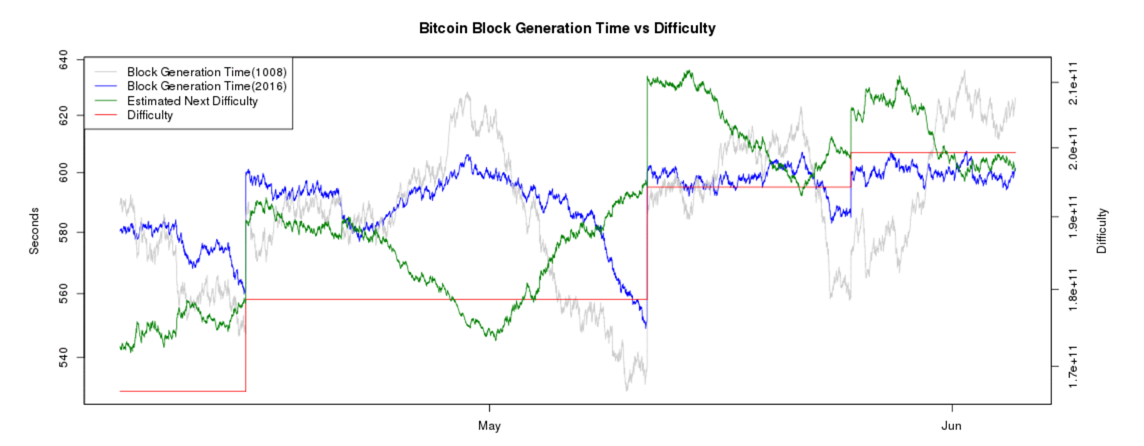
Every 14 days, on average, the Bitcoin difficulty is adjusted, to make the time between blocks stay near 10 minutes.
Real-time data about bitcoin difficulty is posted here:
https://bitcoinwisdom.com/bitcoin/difficulty
The chart below shows recent difficulty adjustments (the red line):

From the same source, the current Bitcoin difficulty is
199,312,067,531
A forum post offers this simple formula to convert this difficulty value to bits:
log2(difficulty) + 32
log2(199,312,067,531) + 32 = 69.53 bits
00000000000000000530216a17ab1e11502720c784975dc7618f8408df6f7c77
0000 0000 0000 0000 0530 216a 17ab 1e11 5027 20c7 8497 5dc7 618f 8408 df6f 7c77
Clearly, that formula works.
2^69.53 / 10 min = 1,420,000,000 Giga-hashes per second